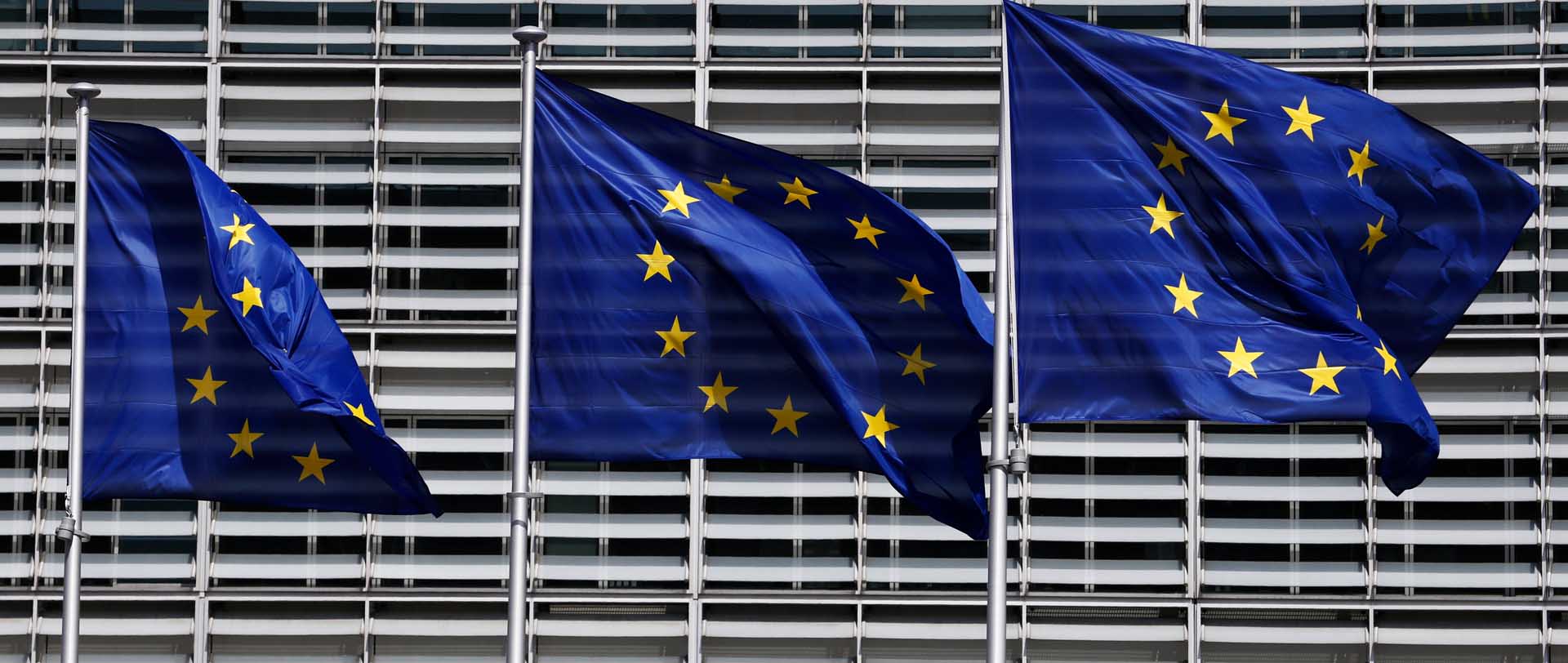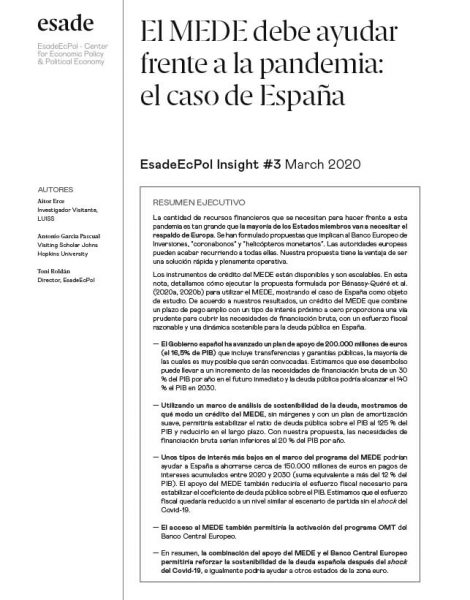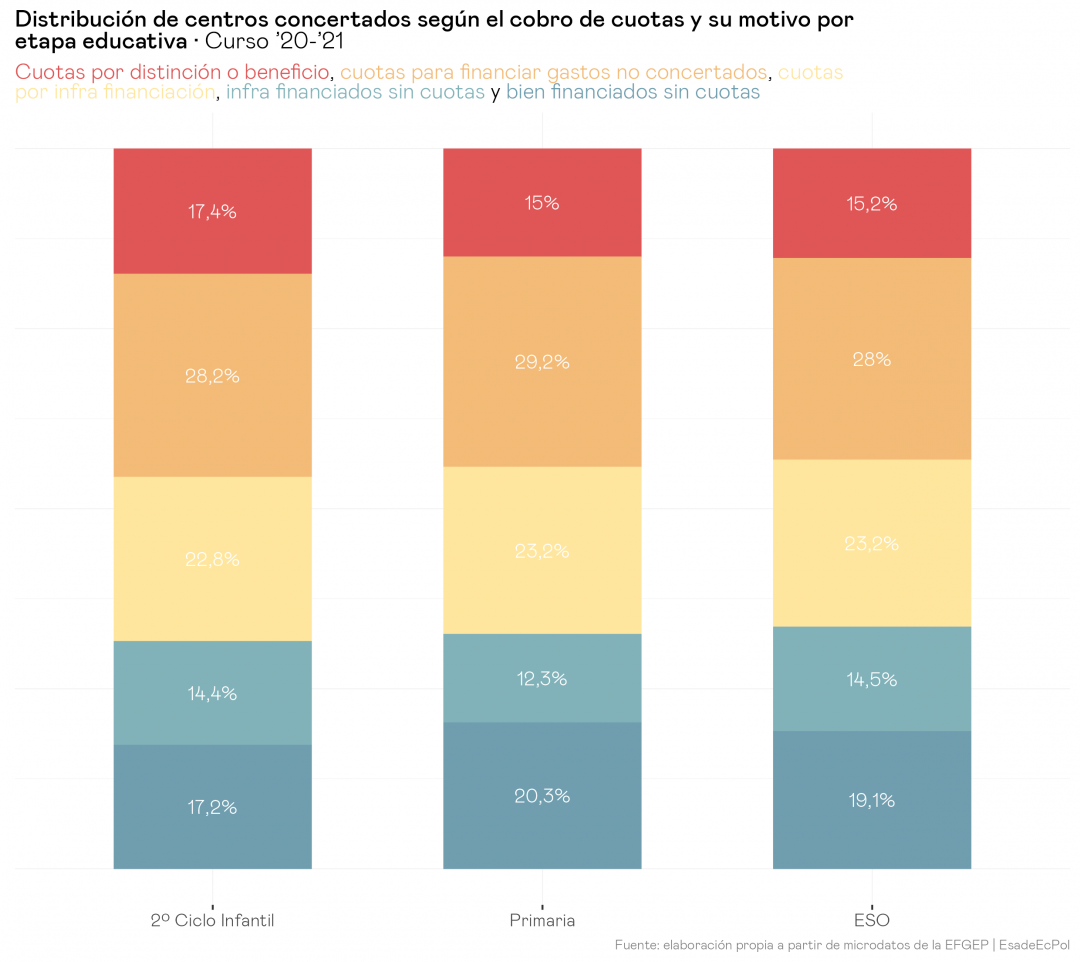
The ESM must help against the pandemic: the case of Spain
Aitor Erce, Antonio García Pascual, Toni Roldán
25 Mar, 2020
EsadeEcPol Insight #3
Executive summary
The amount of financial resources needed to fight the pandemic is so large that most member states will need a backstop from Europe. There have been proposals involving eurobonds and helicopter money – these would work and may eventually be implemented. However, a fully operational and speedy solution is needed now.
The European Stability Mechanism (ESM) lending toolbox is available, has funds and is scalable. In this note, we operationalise the proposal by Bénassy-Quéré et al. (2020a, 2020b) to create a “Covid credit line in the ESM with allocation across member states.” We evaluate three funding alternatives using the existing ESM toolbox. We use Spain as a case study, but similar results would apply to a broad range of euro area countries.
We calibrate a combination of a large, long-maturity ESM loan and a near zero interest rate that delivers a prudent gross-financing-needs path, a fiscal effort within reach and sustainable public debt dynamics.
- The Spanish government has put forward a plan that amounts to €200 billion (16.5% of GDP) including transfers and government guarantees, which will mostly be called in. Funding such a package in the markets would be challenging for the Spanish Treasury. Gross financing needs would increase to about 30% of GDP per year for the foreseeable future and public debt would reach almost 140% of GDP by 2030.
- Using a debt sustainability framework, we show how an ESM loan, without a spread and a smoothed repayment schedule, would stabilise public debt-to-GDP at 125% of GDP, and gross financing needs would remain at less than 20% of GDP per year.
- Lower interest rates under the ESM programme could help Spain save around €150 billion in interest payments cumulatively between 2020 and 2030. ESM support would also reduce the fiscal effort needed to stabilise public debt. The fiscal effort could be reduced to a level similar to the baseline scenario without the Covid-19 shock.
- ESM support, especially if coming through a precautionary line or a standard programme (with light conditionality), would be most effective if provided with reduced margins (as with Ireland and Portugal in 2011) and financed with short maturities. They would also allow the activation of ECB’s OMT programme.
- In sum, the combination of a bold ESM and ECB support solidifies sustainability after the COVID-19 shock, and can do the same for more fragile member states.


Profesor visitante en SAIS, Johns Hopkins & miembro del Consejo Internacional de EsadeEcPol
View profile



